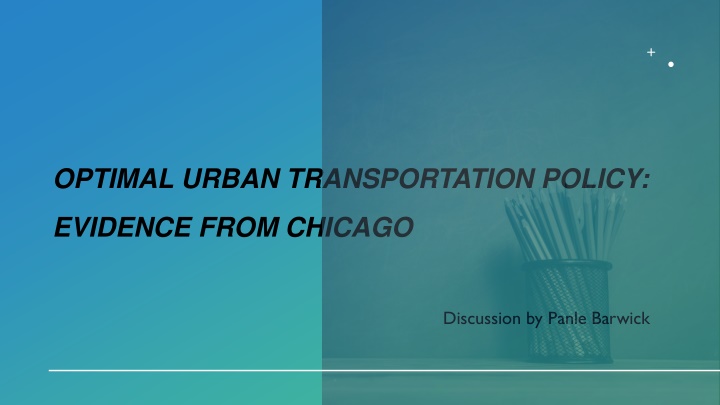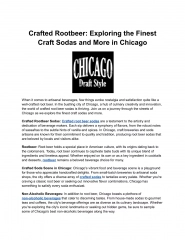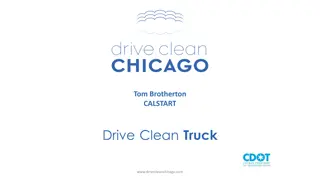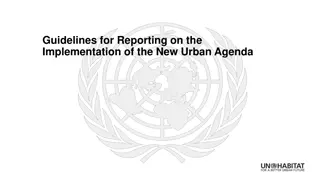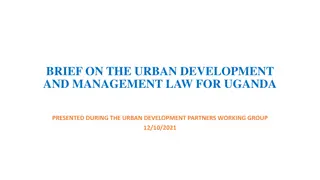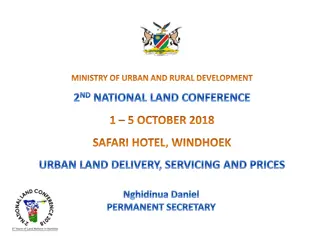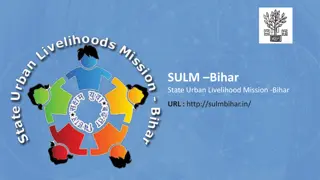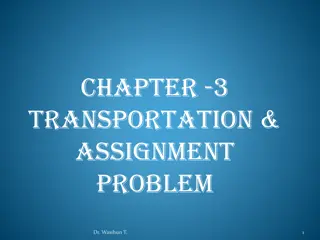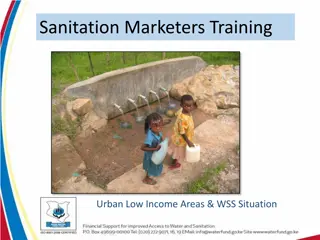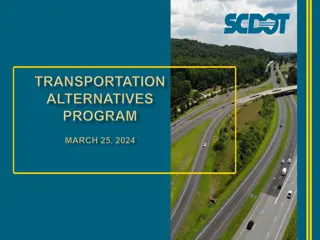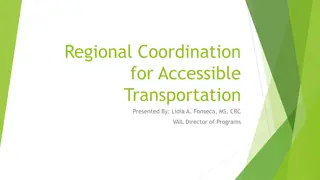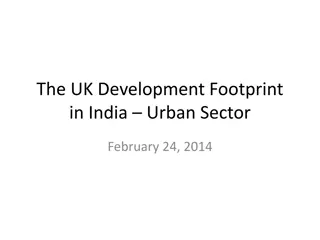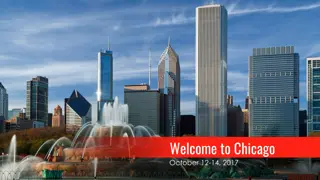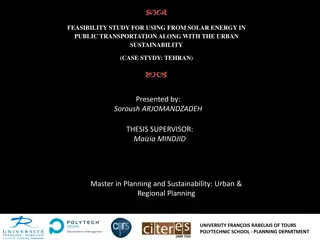Insights on Urban Transportation Policy in Chicago
Discussion by Panle Barwick sheds light on the broken transportation market in urban cities like Chicago, with data revealing the significant impact of congestion on drivers and the economy. The paper offers an innovative theoretical model, rich empirical analysis, and highlights the importance of considering rush hour dynamics in transportation policy evaluation.
Download Presentation

Please find below an Image/Link to download the presentation.
The content on the website is provided AS IS for your information and personal use only. It may not be sold, licensed, or shared on other websites without obtaining consent from the author.If you encounter any issues during the download, it is possible that the publisher has removed the file from their server.
You are allowed to download the files provided on this website for personal or commercial use, subject to the condition that they are used lawfully. All files are the property of their respective owners.
The content on the website is provided AS IS for your information and personal use only. It may not be sold, licensed, or shared on other websites without obtaining consent from the author.
E N D
Presentation Transcript
OPTIMAL URBAN TRANSPORTATION POLICY: EVIDENCE FROM CHICAGO Discussion by Panle Barwick
What I like about this paper The transportation market in many urban cities is broken Chicago has the highest traffic delays in U.S. in 2022 (CNBC) An average driver loses 155 hours/yr, 8% of working hours No. 2-10: Boston, NYC, Philly, Miami, LA, San Francisco, Washington, Houston, Atlanta Fixing congestion in transportation markets has a similar impact on GDP as AI
Amazing data One of the first papers with data on all transportation modes that cover nearly all origin-destination pairs at a fine scale 77 communities by 77 communities by 24 hours = 142k markets Bus, train, car, taxi, ride share Public & private data sources In contrast to most other papers that use travel surveys of 1k-50k obs
Elegant model Novel theoretical insight: Budget constraints make the city planner behave like a monopoly Alternative budgeting models might help mitigate these distortions (more on this below)
Modeling innovation Empirical model: Flexible demand and transportation technology Rich heterogeneity The application based on edges and graph theory quite cool
Comment 1: transportation technology The paper considered many heterogeneities, but not rush hour vs. non-rush hour Congestion more severe during the rush hour A 1% increase in vehicles has a bigger impact on speed when roads are crowded Counter-factuals might have under-estimated the benefit of policy fix
Comment 1: transportation technology Table 4 on speed elasticity Elasticity at around 0.1 appears low Perhaps confounded by rush hour (bigger elasticity) and non rush hour (lower elasticity) This will generate lower benefits for policies (reducing vehicles on the road has a moderate effect on speed)
Comment 1: transportation technology Table 6 on speed improvement The speed improvement for these aggressive policies appear modest Likely driven by low elasticity estimate A congestion fee in Beijing at $0.16/km improve speed by 18% (from 21.5kmh to 25.3 kmh)
Comment 2: travel demand Table 3 on diversion ratios When the cost of driving increases by 1%, 76% of vehicle owners switch to the outside option (stay put or walking) In reality, both short-term and long-term gas prices (hence the cost of driving) fluctuate a lot (between $2/Gal and $4/Gal) but driving share is stable It is possible that non-commuting trips are elastic, but commuting trips are unlikely to be elastic
Comment 2: travel demand Solutions: Include a random coefficient for travel mode, especially driving Market FE vs. sample size (152k vs. 339k) Combine some hours (especially night hours, non-rush hours during the data) to reduce the num. of markets Allow the random coefficient for car to differ either by income Or location x car dummies (people who live far away have to drive to work)
Comment 3: alternative budget model More counterfactual analyses to speak to the theory results What would be the Pigouvian congestion pricing and public transit prices? What about the cost of fund model, where the cost of raising revenue increases with fund size: C(X) = f(X) that is convex No explicit budgets Would this generate similar theoretical predictions?
Comment 4: other counterfactuals Different congestion pricing at different hours (already incorporated) Different congestion pricing in different areas (similar to London) Chicago s transportation network is bad for east-west bound trips Can you simulate travel demand if the network routes are improved? A different paper (few papers could do this)
